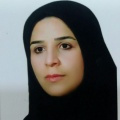| نویسندگان | فرشته جوکارکاشی,پرویز اولیا,محمد علی اموزگار,باقر یخچالی,بهرام کاظمی |
|---|
| همایش | شانزدهمین کنگره بین المللی میکروبشناسی ایران |
|---|
| تاریخ برگزاری همایش | 2015-8-25 |
|---|
| محل برگزاری همایش | تهران |
|---|
| نوع ارائه | سخنرانی |
|---|
| سطح همایش | بین المللی |
|---|
چکیده مقاله
DIVERSITY OF BACTERIORHODOPSINS IN URMIA SALT LAKE
Fereshteh Jookar Kashi1, Parviz Owlia2, Mohammad Ali Amoozegar3, Bagher Yakhchali4, Bahram Kazemi5
1. Biotechnology department,University of kashan,kashan,Iran Department of Biology, Shahed University, Tehran, Iran.
2. Department of Biology, Shahed University, Tehran, Iran. Molecular Microbiology Research Center, Shahed University, Tehran, Iran
3. Extremophiles Laboratory, Department of Microbiology, Faculty of Biology and Center of Excellence in Phylogeny of Living Organisms, College of Science, University of Tehran, Tehran, Iran. eMicroorganisms Bank, Iranian Biological Resource Center (IBRC), ACECR, Tehran, Iran
4. Departments of industrial and Enviromental Biotechnology,National Institue of Genetic Engineering and Biotechnology,Tehran,Iran
5. Cellular and Molecular Biology Research Center, Shahid Beheshti University of Medical Sciences, Tehran, Iran
Background and Aim:Prokaryotic rhodopsins are a diverse set of membrane proteins that contain retinal as a chromophore. They were originally discovered in the extremely halophilic Archaea, or haloarchaea. Bacteriorhodopsins (bR) function as proton pumps within the membrane, generate an electrochemical gradient and are assumed to have a role in the bioenergetics of the cell, providing a light-driven energy source. In order to better comprehend the presence and diversity of bR proteins in their natural environment, it will be important to assess those rhodopsins by culture-independent approaches.
Methods:Salt, sediment, soil and water samples were taken from different sites in the Lake. DNA was extracted from samples. We used PCR and cloning techniques to directly retrieve rhodopsin genes from salt,sediment,soil and water sample. Prokaryotic diversity was investigated using gene fragments encoding bacteriorhodopsin as molecular markers. Rhodopsins were PCR- amplified using primers bop1 (50-GAC TGG YTG TTC ACS ACR CC) and bop2 (5 0 -ASG TCR AKS ACC ATGAA)as de- scribed earlier. PCR products were then cloned using the Fermentas TA cloning according to the manufacturer's directions and clone libraries were constructed for gene targeted.
Results:The clone libraries of bop gene belonged to genera Halorubrum, Natrialba ،Haloquadratum, Natrinema. Moreover, the use of bop is of special interest, because the phylogeny of the bop functional genes reflects the 16Sr DNA phylogeny of the organisms from which the gene sequences were retrieved.
Conclusion:The phylogenetic analysis of sequences from Urmia Lake had some common bop sequences from other hypersaline lakes previously reported.
Keywords:Bacteriorhodopsin, Haloarchaea, Hypersaline, Halophiles, Urmia salt lake

